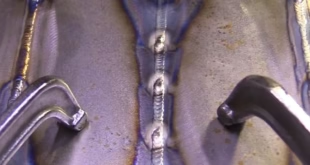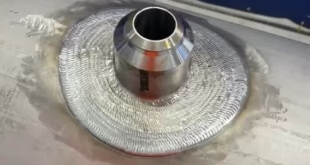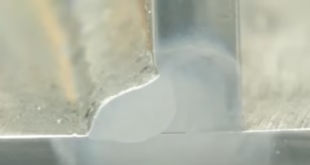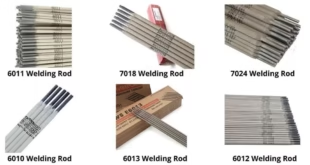Understanding Stainless Steel Electrodes E309/E309L-16
When it comes to welding stainless steel or joining dissimilar metals, choosing the right electrode makes all the difference. Stainless steel electrodes E309 and E309L-16 are among the most commonly used filler metals for joining stainless to mild steel and for welding stainless structures subject to high temperatures. In this guide, we’ll dive into every aspect of these electrodes—what they’re made of, how they behave, and why they matter.
What Makes Stainless Electrodes Different?
Stainless steel welding electrodes differ from carbon steel ones primarily due to their composition and intended application. Their core wire and flux coating are designed to deposit weld metal that resists corrosion, oxidation, and high-temperature deformation. These features make stainless electrodes ideal for environments where ordinary steel would degrade.
Overview of E309 and E309L Classifications
The E309 series is a versatile electrode group formulated for joining dissimilar steels and stainless components. E309L is a low-carbon version of E309, developed to improve corrosion resistance and reduce the risk of carbide precipitation at high temperatures—an issue especially relevant in pressure vessel and piping applications.

AWS Classification and Electrode Designation
Meaning Behind the E309/E309L-16 Designation
The AWS designation “E309/E309L-16” can be decoded as follows:
E – Electrode
309 – Indicates the chromium-nickel stainless steel type (23% Cr, 13% Ni approx.)
L – Low carbon (typically ≤ 0.04%)
16 – Indicates rutile-based flux for use with AC or DCEP (reverse polarity)
Comparison Between E309 vs E309L
The main difference lies in carbon content. E309 contains up to 0.08% carbon, while E309L limits this to a maximum of 0.04%. The reduced carbon in E309L minimizes the risk of sensitization, especially in applications that involve thermal cycling or corrosive exposure.
Chemical Composition of E309/E309L-16 Electrodes
Chromium and Nickel Content
These electrodes are rich in chromium (22.0–25.0%) and nickel (12.0–14.0%), which promote corrosion resistance and provide stability in oxidizing environments. Chromium forms a passive layer that protects the metal surface, while nickel improves ductility and toughness.
Carbon Control in E309L
The carbon content is restricted to improve resistance to intergranular corrosion, particularly in high-heat environments such as those found in refinery and petrochemical plants. This makes E309L-16 a safer choice for welding critical stainless assemblies.
Mechanical Properties and Performance Characteristics
Tensile Strength and Elongation
E309/E309L-16 electrodes typically deliver a tensile strength exceeding 75,000 psi and an elongation of at least 30%, which contributes to ductile welds that can absorb stress without fracturing.
Ductility and Crack Resistance
These electrodes exhibit excellent ductility and are less prone to hot cracking, even in joints between carbon and stainless steels. This makes them an ideal filler metal for structural integrity.
Behavior Under Heat Cycling and Corrosive Conditions
The weld metal retains its strength and corrosion resistance even after repeated exposure to thermal expansion and contraction, particularly in applications like furnace components or exhaust systems.
Applications and Use Cases
Welding Dissimilar Metals
One of the standout features of E309/E309L-16 is its ability to weld carbon steel to stainless steel, such as joining ASTM A36 to 304L stainless. This capability is crucial in construction, shipbuilding, and chemical plant maintenance.
Fabrication of Heat-Resistant Structures
These electrodes are widely used in environments with operating temperatures up to 1000°F (540°C) or higher. Applications include heat exchangers, kiln linings, and incinerators.
Repair and Maintenance Welding
In maintenance jobs where the exact base metal composition is unknown or varied, E309L-16 provides a reliable all-around filler. It bridges the gap between unknown steels and maintains metallurgical compatibility.
Welding Process Compatibility
SMAW (Shielded Metal Arc Welding)
E309/E309L-16 electrodes are designed for manual stick welding (SMAW), suitable for field applications where portability and simplicity are key. Their rutile coating enables stable arc characteristics and smooth weld bead appearance.
Polarity Requirements and Current Type
These electrodes are generally used with AC or DCEP (Direct Current Electrode Positive). DCEP offers deeper penetration and is preferred for thicker materials.
Welding Techniques and Best Practices
Preheat and Interpass Temperatures
When welding dissimilar metals, preheating the carbon steel side helps minimize stress and prevents cracking. A typical preheat range is 150°F–300°F (65°C–150°C), depending on the base material.
Arc Characteristics and Bead Appearance
E309L-16 offers a smooth, quiet arc and produces flat, well-contoured welds. Its fast-freezing slag helps control the weld puddle, especially in vertical or overhead positions.
Slag Removal and Post-Weld Cleaning
The flux system generates a self-peeling slag that’s easy to remove. However, post-weld brushing or pickling may be required for full corrosion resistance in stainless environments.
Storage, Handling, and Electrode Care
Moisture Sensitivity and Baking Recommendations
These electrodes are moisture-sensitive and can absorb water if left exposed, leading to porosity and cracking. For critical work, electrodes should be baked at 300°F–350°F (150°C–175°C) for 1–2 hours before use.
Proper Storage Conditions
Store unused electrodes in sealed containers or heated ovens to preserve dryness. Open boxes should be resealed or returned to ovens promptly.
Advantages and Limitations of E309/E309L-16
Where These Electrodes Shine
Excellent for joining dissimilar steels
High strength and corrosion resistance
Ideal for field repairs and unknown base metals
Works with AC and DCEP
Common Pitfalls and Limitations
Not suitable for full austenitic stainless welds needing matching composition
Requires strict handling to prevent hydrogen-induced cracking
Not recommended for cryogenic applications
Industry Standards and Approvals
AWS A5.4 Specifications
Both E309 and E309L-16 conform to AWS A5.4 standards, ensuring they meet rigorous mechanical and chemical performance requirements.
ASME and ISO Compliance
These electrodes are approved under several international codes, including ASME Section IX for procedure and performance qualification and ISO 3581-A for global quality assurance.
FAQs
Can E309L-16 be used for welding stainless to mild steel?
Yes, E309L-16 is specifically formulated for joining stainless steels to carbon or low-alloy steels.
What polarity should be used with E309L-16 electrodes?
These electrodes work best with DCEP (Direct Current Electrode Positive) but are also suitable for AC.
What is the main difference between E309 and E309L?
The “L” stands for low carbon, which reduces the risk of intergranular corrosion in high-heat applications.
Are preheat and post-weld heat treatments necessary with E309L-16?
Preheat is recommended when welding carbon steels, but post-weld heat treatment is usually not required unless specified by a code.
Is E309L-16 suitable for food-grade stainless steel applications?
Not typically. For food-grade work, matching filler metals like E308L are usually required to ensure full corrosion resistance and compatibility.
Conclusion
The E309/E309L-16 stainless steel electrodes are invaluable tools for welding jobs that require bridging the gap between carbon and stainless steels or operating under high-heat and corrosive conditions. Their well-balanced chemical makeup, versatile welding behavior, and excellent mechanical properties make them a preferred choice across various industries—from construction to power generation. For professionals seeking reliable performance and metallurgical compatibility, E309L-16 stands as a go-to solution.
 Welding of Welders All about Welding and Welders
Welding of Welders All about Welding and Welders



